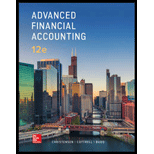
1
Business combination
Business combination refers to a transaction by which a company acquires majority of shares of another company and obtains the control of other company.
To explain:Impact of stock exchanges on business combination transactions (mergers and acquisitions) in 1990s.
2
Mergers
Merger is a process in which two existing companies go into liquidation and one new company is formed to manage their operations.
Business combinations
Business combination refers to a transaction by which a company acquires majority of shares of another company and obtains the control of other company.
The factors that impacted the mergers completed in 2000s. Difference between the business combinations of 2000s and 1990s and reason of less mergers in 2008.
3
Corporate mergers
Merger is a process in which two existing companies go into liquidation and one new company is formed to manage their operations.
Whether the decision to offer more tax incentives in mergers is wise or unwise and three different tax incentives.
4
Mergers: Merger is a process in which two existing companies go into liquidation and one new company is formed to manage their operations.
Actions that can promote mergers.
Want to see the full answer?
Check out a sample textbook solution
Chapter 1 Solutions
Advanced Financial Accounting
- 4 MARKSarrow_forwardQuestion-9 When should specialized allocation hierarchies replace standard methods? a) Standard methods fit all cases b) Complex resource sharing demands structured distribution approaches c) Specialization adds confusion d) Equal splitting works betterarrow_forwardProvide Answerarrow_forward
- Global tech solutions ? Financial accountingarrow_forwardCompute the predetermined overhead rate for each activity base.arrow_forwardOriole Home Supply Company received proceeds of $735000 on 10-year, 9% bonds issued on January 1, 2025. The bonds had a face value of $786000, pay interest annually on December 31, and have a call price of 102. Oriole Home Supply uses the straight-line method of amortization. What is the amount of interest Oriole Home Supply will pay bondholders in 2025? ○ $66150 $75840 ○ $70740 ○ $65640arrow_forward
- 4500 bonds with a face value of $1000 each, are sold at 101. The entry to record the issuance is Cash Premium on Bonds Payable Bonds Payable 4545000 45000 4500000 Cash 4545000 Bonds Payable 4545000 Cash Premium on Bonds Payable Bonds Payable Cash Discount on Bonds Payable Bonds Payable 4500000 45000 4545000 4545000 45000 4500000arrow_forwardNet sales for the year were $2,790,000 and cost of goods sold was $2,050,000 for the company's existing products. A new product is presently under development and will have an expected selling price of not more than $74 per unit in order to remain competitive with similar products in the marketplace. Calculate gross profit and the gross profit ratio for the year.arrow_forward4500 bonds with a face value of $1000 each, are sold at 101. The entry to record the issuance is Cash Premium on Bonds Payable Bonds Payable 4545000 45000 4500000 Cash 4545000 Bonds Payable 4545000 Cash Premium on Bonds Payable Bonds Payable Cash Discount on Bonds Payable Bonds Payable 4500000 45000 4545000 4545000 45000 4500000arrow_forward
 Intermediate Financial Management (MindTap Course...FinanceISBN:9781337395083Author:Eugene F. Brigham, Phillip R. DavesPublisher:Cengage Learning
Intermediate Financial Management (MindTap Course...FinanceISBN:9781337395083Author:Eugene F. Brigham, Phillip R. DavesPublisher:Cengage Learning EBK CONTEMPORARY FINANCIAL MANAGEMENTFinanceISBN:9781337514835Author:MOYERPublisher:CENGAGE LEARNING - CONSIGNMENT
EBK CONTEMPORARY FINANCIAL MANAGEMENTFinanceISBN:9781337514835Author:MOYERPublisher:CENGAGE LEARNING - CONSIGNMENT Financial Accounting: The Impact on Decision Make...AccountingISBN:9781305654174Author:Gary A. Porter, Curtis L. NortonPublisher:Cengage Learning
Financial Accounting: The Impact on Decision Make...AccountingISBN:9781305654174Author:Gary A. Porter, Curtis L. NortonPublisher:Cengage Learning Auditing: A Risk Based-Approach to Conducting a Q...AccountingISBN:9781305080577Author:Karla M Johnstone, Audrey A. Gramling, Larry E. RittenbergPublisher:South-Western College PubPrinciples of Accounting Volume 1AccountingISBN:9781947172685Author:OpenStaxPublisher:OpenStax College
Auditing: A Risk Based-Approach to Conducting a Q...AccountingISBN:9781305080577Author:Karla M Johnstone, Audrey A. Gramling, Larry E. RittenbergPublisher:South-Western College PubPrinciples of Accounting Volume 1AccountingISBN:9781947172685Author:OpenStaxPublisher:OpenStax College





